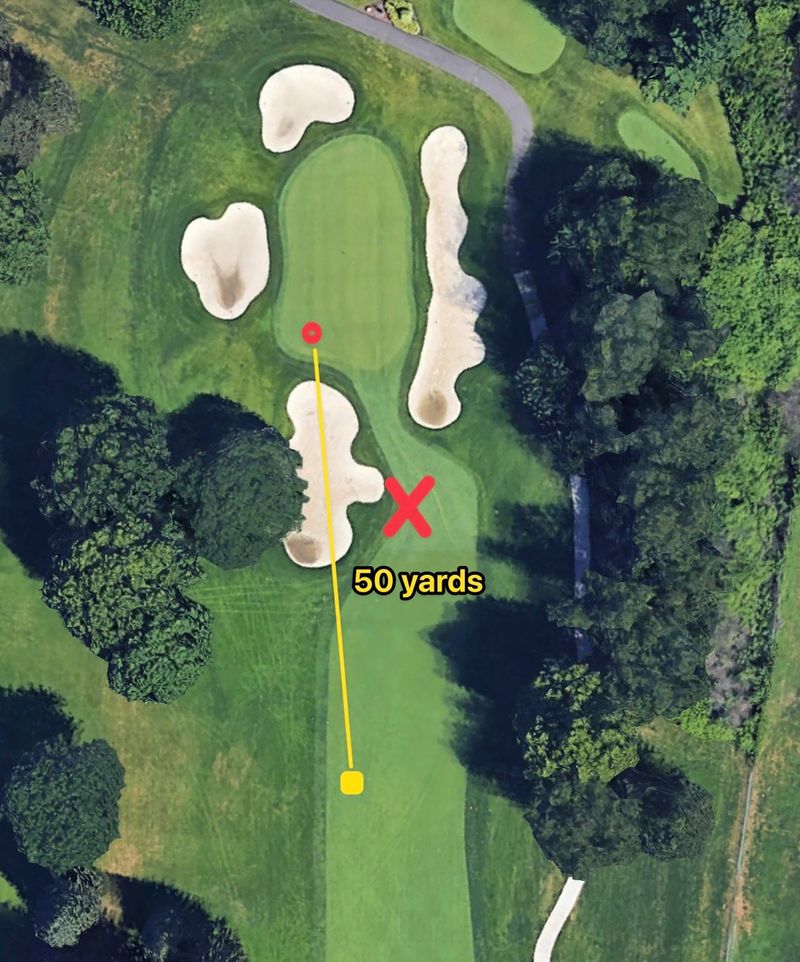You've probably heard this advice before (possibly from me):
Lay it up to your favorite distance
For many golfers, if they can't reach the green, that means laying up to a yardage of 80 yards, 100 yards, 120 yards, or maybe, if you're feeling hot with the 8-iron, 140-160 yards.
In this short newsletter, we're going to talk about why this is generally a BAD strategy.
Why do golfers think this?
As golfers, we make a lot of decisions based on our confidence levels, which is not always in alignment with the "optimal strategy".
And in many cases, I believe this is the correct way to play golf.
I can sit here all day and tell you that a 50-yard wedge shot will give you a better chance at making a par than laying up to 100 yards, which happens to be your favorite yardage.
But if you can't stand over that 50-yard shot confidently, the data doesn't matter—you should go for the 100-yard shot instead.
What do the numbers say?
In golf, confidence comes from various places.
Sometimes, confidence comes from seeing great results over a long period of time. Other times, confidence comes from practice.
If you're like me, confidence can also come from another place—knowing that you're playing a high-probability golf shot.
Thanks to strokes gained data and taken from the book, Every Shot Counts, here's what we know from studying thousands of amateur golf shots. Below is a table showing on average, how many shots it takes golfers of different skill levels to finish a hole from 30 and 80 yards from the fairway:
| Golfer Skill | 30 Yards | 80 Yards |
|---|---|---|
| Pro | 2.5 | 2.7 |
| 80s Golfer | 2.7 | 3.1 |
| 90s Golfer | 2.9 | 3.4 |
| 100s Golfer | 3.1 | 3.7 |
Pretty remarkable right? All this time, you thought a 30-yard wedge shot was one of the hardest shots in golf, but the data shows us that most amateurs fair better from 30 yards than they do 80 yards.
The data above is from the fairway, and as we all know, hitting a wedge from the rough is a bit easier since we have some margin for error. Here's how these same golfers do from the rough:
| Golfer Skill | 30 Yards | 80 Yards |
|---|---|---|
| Pro | 2.7 | 3.0 |
| 80s Golfer | 2.8 | 3.2 |
| 90s Golfer | 3.1 | 3.5 |
| 100s Golfer | 3.4 | 3.8 |
If you compare the two tables, you'll notice another surprising finding...
Even though it seems like hitting wedge shots from the rough is easier, golfers of all skill levels still score better on average from the fairway.
Takeaways from the data
Regardless of skill level, the data shows us that:
- On average, shorter shots are easier than longer ones, regardless of whether they are "partial" or "full" swings
- On average, being in the fairway leads to lower scores
But I know what you're thinking...
C'mon Zach, you haven't seen me play. I am the exception to these rules.
And you very well may be. Let's walk through some scenarios where this data doesn't apply.
Exceptions to this strategy
The list of exceptions below is not comprehensive. Ultimately, as I mentioned in the first section of this newsletter, confidence is king.
If you're not confident over a 50-yard wedge shot and the data doesn't help you improve that confidence, then lay up to your favorite yardage and play your game.
Additionally, here are some scenarios where a full wedge shot is almost always easier than a partial one, regardless of your confidence.
Scenario #1: Hazard in front of the green with a front pin

If the pin is in the front of the green and there is a water hazard, bunker, or thick rough between you and the hole, a full shot is usually better.
Why?
Because from 50 yards, you cannot generate enough loft and spin to stop the ball close to the front pin.
Scenario #2: Fast green, sloping away from you
If you play in dry conditions on fast greens, you may experience a scenario where the green slopes away from you and you need to hit something high enough to stop the ball on the green.
In this scenario, a full wedge shot is better because you can generate more loft and spin to stop the ball.
Final Thoughts
Data can help us make better decisions.
Data can increase the confidence we have in our strategies.
But data cannot be the only factor we consider when playing golf.
